Choosing A Good Toothbrush
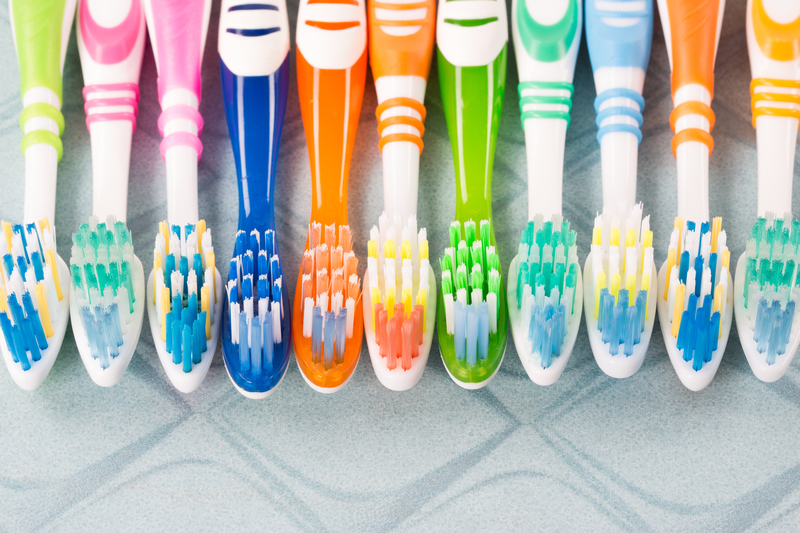
Do you ever look at all the toothbrush options at the store and wonder what the difference is between all of them? Toothbrushes come in all shapes and sizes, and it’s for a reason. They are made to fit certain sizes of mouth. Bristles come in various materials and designs, and there are extra features on some toothbrushes. So what should you choose? Use these tips for the next time you pick out your toothbrush so you know you’re getting a good one for your mouth!
Why So Many Different Kinds?
For something that is so simple to use, there sure are a lot of different toothbrushes out there. Toothbrushes have been around for centuries, with some historians quoting them as being as old as 3000 BC! Ancient civilizations used a “chew stick,” or a twig that had a frayed end in which they would brush their teeth. The common bristled toothbrushes that we are so familiar with didn’t come into existence until around 1498 in China. The bristles that were used in these toothbrushes were actually hog hair that were attached to handles made of bamboo or bone. Even these evolved, though, into the toothbrushes that we use today, but instead with nylon bristles and plastic handles.
Since World War II, oral health has increased in popularity and a variety of different toothbrushes have been invented. But which ones are best? How do you know which toothbrush is for you? Toothbrushes are specifically designed for different sizes and shapes of mouths, plus there are age-specific toothbrushes, like for children, that have smaller (or larger) handles and bristles depending on the age of the person. No matter what toothbrush you use, the principle behind it should be the same: improve your oral health care and prevent disease. Your toothbrush should be helping you do that, if you’re using the right one.
Types of Toothbrushes
There are basically two types of toothbrushes: soft-bristled and hard-bristled. Most dental professionals agree that using a soft-bristled toothbrush is best for cleaning plaque and debris on your teeth. Hard-bristled toothbrushes are not recommended as they are known to wear away your enamel and can lead to gum recession and lesions. Although they do remove more plaque than traditional soft-bristled toothbrushes, hard-bristles cause more damage than good, even when trying to get rid of tough plaque. Toothbrushes with small heads are also great to use because they can get into the hard-to-reach places in your mouth. When deciding between a small-headed or large-headed toothbrush, keep in mind that the size of your mouth should be the determinant for which one you buy. Those people with large mouths should use a full-sized toothbrush head, while those with smaller mouths should utilize a more compact head.
Toothbrushes also vary in the type of the handle (non-slip grip or flexible neck), shape of the head (tapered or rectangular), and style of bristles (rippled, flat, or dome shape). Although there are a variety of kinds, ultimately the best toothbrush is one that fits your mouth and allows you to reach all of your teeth easily. To figure out which one works best for you, trying toothbrushes with different bristle styles or head shapes is recommended until you find one that is most comfortable.
Manual or Electric: Which is Better?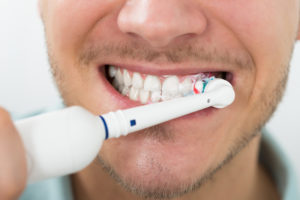
With the advent of the electric toothbrush, many people have been drawn to its ease of use and effectiveness. While manual toothbrushes have been used for centuries, the electric toothbrush is faster and more efficient. If you’re a diligent brusher, manual toothbrushes are a great option, but for those who want the toothbrush to do the work for them, electric is the way to go. Just like manual toothbrushes, electric toothbrushes come in different sizes and have a variety of replaceable heads. Electric toothbrushes are known for having smaller heads than manual, so at the beginning, it may take some time getting used to their small size.
Because of their size, electric toothbrushes are able to clean teeth more thoroughly and get to hard-to-reach areas of the mouth better than manual toothbrushes can. Electric toothbrushes also use different types of bristles movements, such as oscillating/rotating technology, that has been proven to remove more bacteria and plaque than manual toothbrushes. Additionally, electric toothbrushes have a smaller likelihood of hurting your enamel and gums, which is advantageous for those individuals who have sensitive teeth and gums. Whether you choose manual or electric, the most important takeaway is that both fit your mouth size and allow you to clean each individual tooth. If your toothbrush can do both of those things, you’re on your way to achieving great oral health and a nicer smile.
Tips For A Cleaner Mouth
Having the correct toothbrush for your mouth is the first step in maintaining good oral health. But a common question that many have is, “What is the correct way to brush my teeth?” When using a regular soft brush, make sure to angle the brush along the gum line and brush down from the top, then up from the bottom on each tooth in small circles. This motion helps get out the tiny food particles stuck between your teeth, plus it protects your gums from over-brushing. If your gums tend to bleed when brushing, that usually indicates that the gums are inflamed and those areas should actually be brushed more thoroughly and more often. Also make sure that you are brushing your chewing surfaces, the inside of your teeth, and your tongue.
For more tips on how to protect your teeth and maintain a healthier mouth, visit your local provider at Belmar Orthodontics. Change your oral health for the better by calling (303) 225-9016 and setting up your first consult for the comfort, care, and personalized treatment that you deserve!
Braces With Oral Health Problems
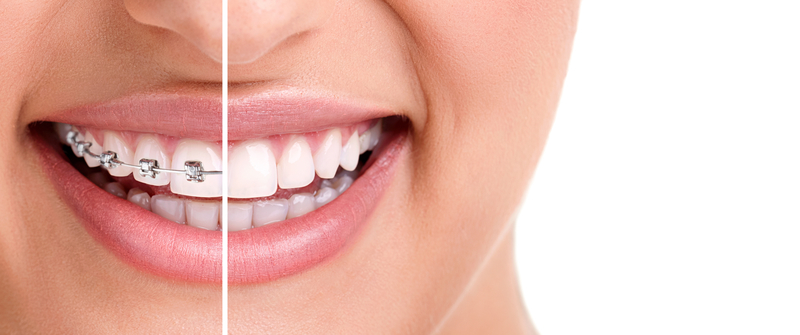
Did you know that your oral health can affect your overall health? Poor oral health can even worsen health conditions you already have such as diabetes or cardiovascular disease. That is because oral health and overall health are highly connected. Your oral issues can become better with braces, but that is only if certain oral health problems are corrected beforehand. Patients can also develop oral health problems if they don’t have the right knowledge with proper braces care. Use these tips to avoid oral health problems with braces and find out how we work around current problems to provide you with a straighter smile!
Oral Health Goals
Did you know that orthodontic treatment can give you a healthier mouth? We know that braces help straighten your teeth, but they can also improve the health of your gums and teeth. When you have crooked and crowded teeth, this makes cleaning your mouth more difficult. This can cause serious oral health problems, such as tooth decay, periodontal disease, and tooth loss. Whether you have straight or crooked teeth, before you let an orthodontist start working on you, there are some important oral health tips to be following before any work begins:
- Eat a healthy diet that limits sugary beverages and snacks
- See a dentist regularly for prevention and treatment of oral disease
- Brush teeth twice a day with fluoride toothpaste
- Floss daily
- Discuss changing certain lifestyle practices, like smoking and using oral piercings
Types of Braces
Braces are a big commitment, and you want to make sure you’re using the correct ones whenever you get them put on. Each of us is a different size and shape, and are mouths aren’t any different. Because of this, there are various types of braces for different sizes and shapes of mouths for children, teenagers, and adults. The four most common types of braces are: traditional, short-term, clear, and Invisalign/ClearCorrect.
Traditional braces are those that we see on a daily basis: a system of wires and brackets that are bonded to our teeth. This type of braces are the most cost-effective, reliable, and are best suited for severe orthodontic issues. Short-term braces are recommended for those patients who wish to align just their front six teeth-the ones that others see the most. These are used for the shortest amount of time (less teeth to align), but there is no adjustment to your occlusion (bite). So if you have a problem with an under/overbite, short-term braces may not be for you. Clear braces are similar to traditional metal brackets except that they use ceramic brackets that match the color of your teeth. These braces have a high aesthetic appeal for those who don’t want to be seen wearing braces, plus they are highly resistant to staining. Invisalign//ClearCorrect straighten your teeth without the traditional wire brackets, and are completely removable, which makes cleaning your teeth a cinch. This type requires more responsibility for the wearer, but if you’re committed to the strict wearing regimen, you can have a straight smile in as little as 12 months!
Taking Care of Your Braces
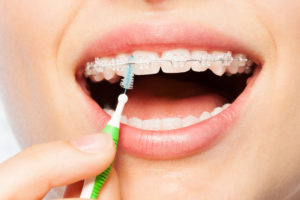
While similar to managing our oral health, maintaining our braces has a few extra steps. To maintain good oral health with braces, it’s important to adopt good oral hygiene throughout the entire process. Brushing after every meal is one of the most important but most overlooked steps in maintaining good oral health. When eating, food particles get stuck in between our teeth and our braces, which can cause staining and bacterial backup between our teeth. Using a regular soft brush in an up-and-down motion on each tooth will do the trick. Secondly, use threadable floss or a floss threader. These tools allow you to get between each tooth and underneath the wires to clean out any food that may be trapped there. Insert the threader between two teeth and move back and forth until the food is released. Lastly, use a proxabrush, or a “Christmas tree brush.” Place the proxabrush between two brackets, below the archwire, and brush up and down. Like the threader, this will also help loosen up any food that may be stuck between your teeth.
A great way to ensure that your braces don’t break and that you don’t get unwanted gunk stuck in them is to watch what foods you’re eating. Foods that are hard, sticky, or high in sugar should be avoided. Eating food that is high in sugar can cause cavities when wearing braces, which can lead to more dental work that you would need to have done. Furthermore, patients with braces should limit between meal snacks and avoid food that could bend the wires, such as caramel, nuts, chewing gum, ice, or popcorn.
When To See An Orthodontist
Now that we understand more about the importance of our oral health, plus the different types of braces, when should we make an appointment with an orthodontist? Many times, we only schedule a time to see an orthodontist whenever our teeth are crooked and we want them straightened. But there are other factors that influence when we should start thinking about getting in to see the doctor:
- Jaws that shift, make sounds, protrude, or are recessed
- Speech difficulty
- Biting the cheek or biting into the roof of the mouth
- Facial imbalance or asymmetry (features out of proportion to the rest of the face)
- Inability to comfortably close lips
- Grinding or clenching of teeth
As mentioned earlier, these are signs that your oral health might not be up to par like it should be. Meeting with your orthodontist and discussing these issues will help them better treat you with one of the four types of braces that we discussed previously. The sooner you get in to see your orthodontist, the sooner any pain or discomfort can be evaluated, treated, and extinguished.
Meet Your New Year’s Resolutions With Our Help!
Belmar Orthodontics can help you on your path towards having a straighter smiles and better oral health. With reputable orthodontists, manageable treatment plans, and services for children and adults, we can help you get the smile that you deserve! Call (303) 225-9016!
Change Your Smile in 2019

Millions are ready to make changes in their life with the start of a new year. If you haven’t already, consider adding resolutions to transform your smile in 2019. This is quite easy to do if you have the right tips to get started. Whether you want a whiter smile, straighter smile or you want to change your oral health issues, you can achieve it.
Resolutions 2019
Making New Year’s resolutions is something that countless millions will do in the month of December. For many, the start of a new year is a time for reevaluating health and life goals, and a time when many recommit to goals they didn’t quite reach. Some of the top resolutions include:
- Eating healthier
- Exercising more
- Smiling more
- Saving money
- Making better health choices
- Sleeping enough
- Being social
Did you notice that oral health isn’t anywhere on the top resolutions that people make? Oral health is often overlooked because it seems like something so small compared to your overall health. However, your oral health is directly related to how healthy you are. Improvements to your smile and mouth health can improve your health and wellness.
Many chronic conditions become worse if your oral hygiene is lacking. Some include diabetes, heart disease, autoimmune disorders, and anything that has to due with your nutrition. With chronic oral health problems such as extensive tooth loss, your overall health will decline rapidly. You may not be able to eat, and chewing, biting, smiling and other basic functions will become difficult. However, most oral health issues are avoidable by simple habits done daily. You have heard of most of these habits already, as they are the basics you hear from the dentist every time you go in for a visit. However, most people can improve their technique with oral hygiene even if they are already doing the basics.

Small Changes, Big Results
Our patients either have braces on their teeth or they are looking to get them. Great oral health is needed if you want to get braces on your teeth. We make sure that our patients are free of cavities and gum issues before orthodontic treatment happens. That means, a dental visit is needed to check for any dental issues beforehand. When dental issues are there, they are fixed and great oral hygiene must be followed thereafter. That includes:
- Brushing. Brush your teeth at least twice a day with fluoride toothpaste. With braces, brush after every meal. Use a proxabrush tool or a Waterpik to dislodge stuck food. Brush in all different directions, especially with the brackets. Replace your toothbrush every 3 months or when the bristles become frayed.
- Flossing. This step is skipped often, but is so important to your smile! Flossing gets 40% of your tooth surfaces. If you want a better smile with braces, you gotta floss or that smile will be damaged. Whether you have braces or are getting them, make the decision to floss 1-2 times every day, using floss threaders or threadable floss.
- Nutrition: Skip the sugary foods as much as possible. This leads to plaque production and tooth decay. Avoid carbonated drinks or ones with citrus that leads to tooth erosion.
Continuous Oral Problems
If you brush, floss, visit the dentist and use oral health aids like mouthwash and fluoride, you may wonder why you still get cavities and gum problems. Studies show that your smile and oral health can be determined by genetics in some cases. Some genes that run in families or specific cultures can make you more susceptible to oral health diseases. For example, those of African descent have specific genes that make them more susceptible to gum disease.
If you have specific conditions that run in your family such as heart disease or diabetes, oral health problems will likely follow suit. This is not inevitable, but something you must be aware of. If you have any sort of chronic condition, make sure you are doing all that you can to have good oral hygiene habits throughout your day. If you continue to have frequent oral problems or issues with your smile, we can go over proper oral hygiene methods during one of your orthodontic appointments. Great oral hygiene and following proper techniques is very important to keeping your teeth healthy and strong, especially with braces. Sometimes, all it takes is changing up your technique or what you are eating to have better oral health and a better smile.
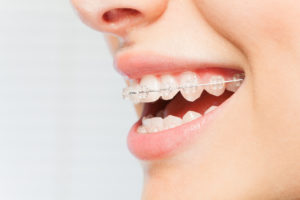
Cosmetic Changes to Your Smile
If you want to completely transform your smile in 2019, don’t wait to get orthodontic treatment. Studies show that getting braces is a great way to not only help you reduce your oral health problems, but an excellent way to get a better smile. Orthodontic treatment generally takes 18 months or less from start to finish. Some patients only need braces for 6 months depending on their teeth and what treatment option they choose.
There are many orthodontic options patients have to transform their smile, and half of them are invisible options. That means, you can’t see the appliances on your teeth. You have the options of:
- Traditional Metal Braces – These are the classic metal bracket and wire option that is most commonly chosen by patients.
- Ceramic Braces – These have the same bracket and wire design of metal braces, except that they are made out of white ceramic material. This helps decrease demineralization during your orthodontic treatment.
- Lingual Braces – This is a discrete metal braces option that is placed on the back of your teeth. Instead of just a square bracket, the metal must be custom-made to the shape of the back of your teeth.
- Invisalign Treatment – This is the most invisible option available to our patients. Invisalign is a series of transparent aligners that you wear at night and throughout the day. You can remove them for eating, playing sports, cleaning your teeth and more.
To choose your option today, call Belmar Orthodontics at (303) 225-9016!
Why You Need Both a Dentist and Orthodontist
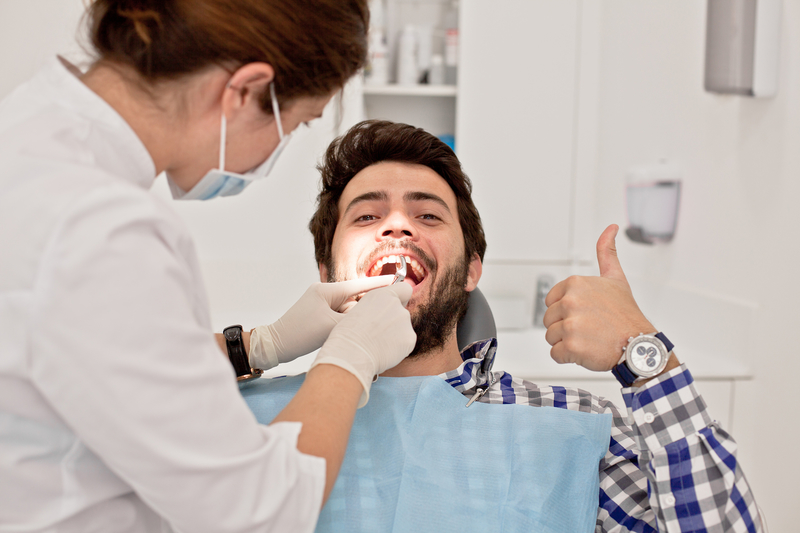
Dentists and orthodontists are both highly-trained professionals that can transform your smile. However, they provide completely different services to patients and both may be needed to help get your smile as healthy as possible. Orthodontic treatment connects to dentistry in many ways, as do the professionals themselves. If you’re like many others, you may need both professionals to keep your oral health in check.
Your Oral Care
Did you know that your oral health can affect all other aspects of your health? This is especially true if you already have some chronic conditions such as diabetes and heart disease. If your oral health isn’t taken care of, your overall health can worse and you are more susceptible to infection. If you don’t control chronic conditions, your oral health can worsen, as the blood vessels that nourish your teeth and gums can become damaged. Your teeth are more likely to decay and get infections that lead to tooth loss.
That is why taking care of your oral health is so important. It can help determine the state of your overall health and if you keep your teeth for a few years or for many. Many people need both an orthodontist and a dentist to help keep their mouth healthy. Not everyone needs an orthodontist alongside their dental care, but millions do. At least 4 million are getting braces each year in the United States alone to correct bite, alignment and problems with the teeth that lead to oral health diseases. When oral health care is happening at home, yet gum disease tooth decay continue to happen, it’s time to also seek help from an orthodontist.
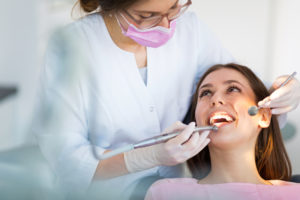
How Can a Dentist Help You?
A dentist is a professional that every person needs. Dentists are vital to you having good oral health for life. They can detect the presence of tooth decay, gum disease, oral cancer, oral sores and any other oral problem, plus they do the work to help correct those issues. These professionals go to school for 10 years just learning about your mouth and facial structures so they can help you stay healthy. Orthodontists receive all that same training, plus 2-3 extra years learning about straightening teeth, bite and alignment issues and structural problems with the mouth.
Because these professionals do different work, you will probably need both. Dentists have the primary duty to find the presence of tooth decay (cavities) using digital and x-ray technology. Then they have many different procedures to remove decay, fill the cavity, and restore your smile. They can do cosmetic work to make your smile look better and they deal primarily with oral health diseases and helping you avoid them so you don’t have early tooth loss. Orthodontists are trained to see cavities and oral health issues, but they will do structural work to help change your smile instead of dealing with the disease aspect of your oral health. Their work focuses on prevention of those issues in the first place.
How Can an Orthodontist Help You?
Did you know that people have had orthodontic care at least since the time of the Ancient Egyptians? More discoveries are finding orthodontic appliances on teeth thousands of years ago. Why? Because people that long ago also understood the benefits of straighter teeth. It took many centuries for orthodontists and orthodontic work to become established.
Studies found that straighter teeth made dental issues less likely to happen. When patients received orthodontic straightening—even through crude methods—they were less likely to have their teeth decay or break and less likely to have gum issues. The same holds true today. Crooked teeth are teeth that are much harder to clean. In a straight, even bite, the top front teeth rest just slightly in front of the bottom front teeth. From the front to the back, the teeth rest evenly on one another, evening out pressure from biting, chewing, eating, talking and more.
When the teeth are crooked, patients will get areas where they simply can’t get a toothbrush or floss to and those areas decay. The teeth may be at odd angles, and with uneven pressure placed on those teeth all the time, they may simply break. If you have crooked teeth, an orthodontist can easily make a plan to straighten them. Using digital x-rays, an orthodontist can examine your bite, alignment and incoming teeth and can make a plan to ensure all your teeth line up for the best oral health you could have.
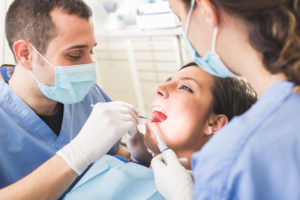
Do You Need an Orthodontist?
Not everyone will need an orthodontist, but their care can benefit most people. Even getting slight straightening of the teeth can reduce your dental breaks, emergencies and issues with oral health diseases. Orthodontic care can even help with bad breath if that stems from plaque and bacteria in the mouth that you can’t quite get rid of. To know for sure if you need an orthodontist, make sure to schedule an examination.
For children, the national recommendation by groups such as the American Association of Orthodontics is to visit an orthodontist around age 7 or 8. This is a key time for an orthodontist to be able to tell if the incoming adult teeth are coming in at the correct angle and place in the mouth. Oral health issues that can become severe later on in life can be caught early and childhood and many oral problems can be prevented with some orthodontic care. For all other issues with finding and filling cavities, gum disease, sores and more, make sure to call your dentist. To schedule your consultation with the orthodontist, call Belmar Orthodontics today at (303) 225-9016!
Be Thankful for Orthodontic Treatment
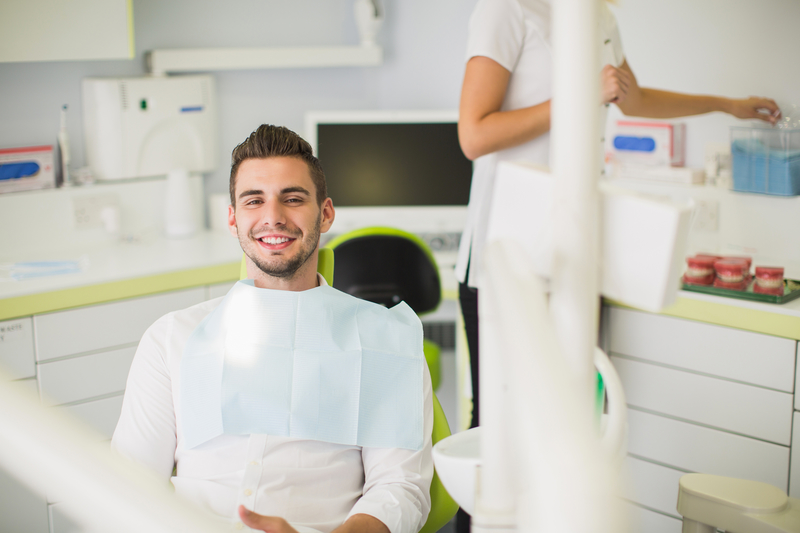
Studies show that not enough Americans are taking good care of their teeth, especially through dental and orthodontic treatment. The advanced technology available today is what allows patients to keep their natural teeth healthy for life and is something that millions in the world don’t have access to. Find out why oral health services such as orthodontic treatment is so important to patients and something to be thankful for this time of year!
Your Oral Health
When you think of the most chronic conditions and diseases that plague people today, you may not think of cavities as being one of the them. The National Institutes of Health reports that tooth decay—or cavities—are the most “chronic, prevalent disease” among American children and adults. In fact, about 92% of people have tooth decay by the time they reach adulthood. In all age groups, roughly between 20% and 25% of people have untreated decay they are not aware of.
What does tooth decay have to do with orthodontic treatment? This decay can happen to anyone at anytime and you are more likely to have tooth decay during your orthodontic treatment. Many patients opt for lingual, ceramic or traditional metal braces to straighten their teeth. These methods require brackets that are bonded to the teeth with wires that pass through those brackets. Even though these appliances are highly effective for providing beautiful straightening power, they can make it harder to clean your teeth. Because it’s harder to clean them, and some patients don’t take the extra time to do this, you can end up with tooth decay. That adds to that 92% statistic.
The best way to eliminate your risk for that tooth decay (as well as other oral health diseases), is to properly care for your teeth both with and without braces. That involves brushing your teeth at least twice a day for 2 minutes at a time, as recommended by the American Dental Association. When you have braces, you have to do this after every meal to avoid acidic plaque buildup, which happens when your food and drink sugars mix with mouth bacteria. With braces, threadable floss to go around brackets and wires is generally needed, as well as cleaning items such as a waterpik (water shooter) tool and a proxabrush for brackets. Your oral health can be stellar during orthodontic treatment with the right oral hygiene.

How Does the U.S. Compare?
Orthodontic treatment is a time when those in the U.S. can have a greater risk for developing cavities. This comes from a lack of oral hygiene during your orthodontic treatment period. However, the world at large is battling oral health diseases and poor dental and orthodontic care on an epidemic scale. The World Health Organization reports that cavities (tooth decay) and gum disease (periodontal disease) “have historically been considered the most important global oral health burdens”.
60%-90% of people worldwide have tooth decay and oral diseases connected to this condition. Children are affected the most, but statistics are almost as high in adults worldwide. Even though the U.S. is at a high percentage when it comes to tooth decay (92%), the presence of tooth decay is generally eliminated in most of the population through proper dental work and access to dental services. In the majority of other countries—especially underdeveloped ones—dental or orthodontic work is not a possibility for most. Oral health diseases are simply left untreated or the teeth are pulled when they become too painful.
The Connection to Orthodontic Treatment
Getting a cavity or having an oral health problem during your life can definitely be avoided, but most people will have some sort of oral problem, even if it is small. There are ways to prevent those problems such as proper brushing and flossing every single day. A great way to reduce your risk for oral health diseases is through orthodontic treatment. For children, this is known as child orthodontics. The American Association of Orthodontics recommends that children have their first orthodontic appointment between age 7 or 8.
This is a time when baby teeth are starting to fall out and adult, permanent teeth are starting to come into the mouth. Proper examination by an orthodontist can sport bite and alignment issues that are developing in children. When these issues occur, the teeth can come in crooked all over or they may not rest in the position they are supposed to. This can lead to speech impediments, many dental emergencies and broken teeth in the future from uneven dental pressure, higher instances of tooth decay and gum disease, and problems with oral health diseases.
Orthodontic treatment when young can help align the teeth and jaws to prevent oral problems as a child grows. When teens and adults receive orthodontic treatment via braces, they can better straighten permanent teeth when they come in. This sets everything straight and functional before the jaws harden in adulthood. Straight teeth and aligned jaws make it so cleaning the teeth becomes almost effortless. The risk for tooth decay and gum disease is also significantly lower.

Be Thankful for Your Orthodontic Treatment
Dentistry and orthodontic treatment helps diminish the presence of oral diseases.Yes, tooth decay and gum disease happen frequently due to poor oral hygiene habits. However, orthodontic treatment can help prevent those problems in the first place. Great oral care can prevent developing problems throughout your life. Even when these issues do happen, you won’t have to simply get your teeth pulled or let them decay and fall out of your mouth.
You have great orthodontic and dental options in the United States that allow you to keep your teeth, while many people across the globe have to lose them. Remember that the next time you think about skipping your oral care appointments. To reduce your risk for oral health diseases, you can call Belmar Orthodontics at (303) 225-9016 and ask about your orthodontic treatment plan.
Foods and Drinks that Harm Your Teeth
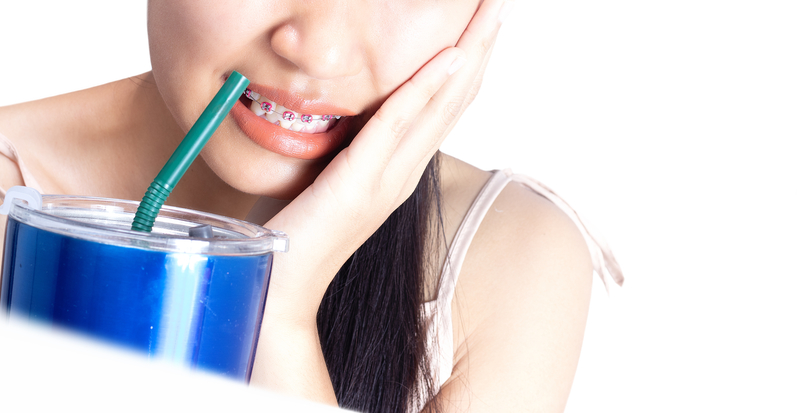
Did you know that what you’re drinking might be hurting your oral health? Many patients experience problems like tooth erosion and thinning without realizing that the problem is what they’re eating. Use this guide to know the effects of foods and drinks on the teeth and what to watch out for!
Wear and Tear on Your Teeth
Your teeth are made of tightly-packed minerals that keep them strong and healthy. Those include calcium, phosphate, magnesium and more. Your saliva helps break down your food and helps to remineralize your teeth each day. Eating certain foods and drinks can strip minerals from your teeth slowly over time, making them weak, sensitive and thinner. These are common oral health problems with age. However, thinning (or enamel erosion) and sensitivity usually come from a lack of oral hygiene. If you enjoy a daily soda or you love your sweet treats throughout the day, you may be weakening your teeth at a rapid pace.

Foods that Cause Damage
Some foods build up your tooth enamel and help it, like dairy products helping to remineralize calcium. Others—like sugar—tear it down. Avoid these foods to keep your smile healthy:
- Anything Citrus: This includes both foods and drinks. Citrus fruits (lemon, lime, orange, etc.) and drinks contain citric acid. This is there naturally or as an additive to maintain flavor. Any type of acid on a label will erode your teeth if you ingest it.
- Sugar: Sugar mixes directly with mouth bacteria to form a sticky film called plaque. That plaque sticks to teeth and causes decay. Because it’s acidic, it will work on your teeth to erode and decay them. The more sugar you eat, the more plaque your mouth makes, and the more erosion and decay you get. This is especially true while wearing braces.
- Hard Candies/Mints: Any candy or mint you suck on (like a sucker) exposes your teeth to sugar constantly, which leads to decay from plaque acid.
- Chewy/Sticky Candy: Any chewy/sticky consistency is destined to get stuck in brackets and wires. It also sticks like glue to the teeth if they’re not brushed properly.
- Starchy Foods: Breads, cookies, crackers, pasta and anything starchy will get stuck in your teeth. All of these quickly break down into sugar, which can affect your teeth and your overall health.
- Popcorn: Popcorn and hard foods like nuts, hard veggies and fruits and non-food items can be bad for your teeth with braces, as they can break your orthodontic appliance. Limit them to avoid orthodontic emergencies.
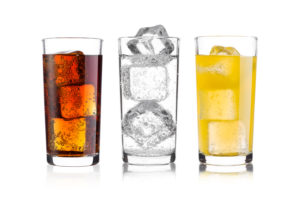
Drinks to Avoid
Drinks can be even more damaging than food in many cases. That’s because you can drink all day long, and if your drink is acidic, those acids stay on your teeth up to 30 minutes. Soft drinks (soda/sports drinks) are notorious for high sugar content. That sugar can create tons of plaque in your mouth that causes decay. As we mentioned, that combination is acidic. Every time you drink, your are making plaque that can weaken your teeth.
Avoid these drinks that are acidic, sugary or can stain:
- Soda: This contains carbonic acid, which comes from a chemical reaction between carbon dioxide and water. It stays acidic on your teeth for up to 30 minutes. Most sodas are incredibly high in sugar, which means they are doubly bad for you.
- Energy drinks, etc.: Energy drinks, sparkling water, and any drink of the sort that contains carbonic acid. Avoid drinks with fizzy bubbles or limit their contact with the teeth by drinking through a straw.
- Sports Drinks: These drinks are often full of sugar, plus citric acid to maintain flavor. Avoid them and stick to water.
- Water Enhancers: Water-flavoring liquids or powders generally contain citric acid to maintain flavor. Even if the substance is clear, the acid will still erode teeth even if the drink isn’t staining them.
- Alcohol: Many contain carbonation (carbonic acid) and all will kill nerves in your mouth, leading to loss of feeling over time.
- Coffee: This drink, tea, wine and anything with blue, purple or red pigments will stain the teeth. If you teeth are eroding over time, the dyes get into small cracks in the teeth, changing tooth color rapidly.
Damaging Habits that Harm Your Teeth
If you want to have your teeth for life, you have to take care of them. You have to try even harder to care for them when you have braces. More than 4 million Americans are wearing braces each year. Some opt for Invisalign aligners, which are removable and which make cleaning the teeth fairly easy. However, many patients—especially children and teens—wear lingual, traditional metal or ceramic braces. All of these types of braces have brackets bonded to the tooth surface and wires that hold them in place.
If you don’t brush and floss like normal, your teeth can decay, erode and you can have problems with both gingivitis or severe gum disease. Your teeth can weaken and break easy and they can fall out. That’s why you want to have meticulous oral hygiene all throughout life. Proper brushing, flossing, visiting the dentist or orthodontist, and using oral health products like mouthwash and fluoride can all help you keep your natural teeth healthy.
With braces, you can have your teeth become thin and weak based on what you eat, or they can decay and change colors based on how you care for them. You can definitely harm your teeth if you’re not cleaning your brackets, wires and teeth several times a day. Good oral hygiene care is vital to having a healthy and beautiful smile at the end of your treatment. An easy step to avoid problems is to avoid the foods and drinks we listed above. Be even more careful about those foods and drinks with braces. For specific questions about certain foods or drinks, or help for proper braces care, call Belmar Orthodontics today at (303) 225-9016!
Braces Can Change Your Life
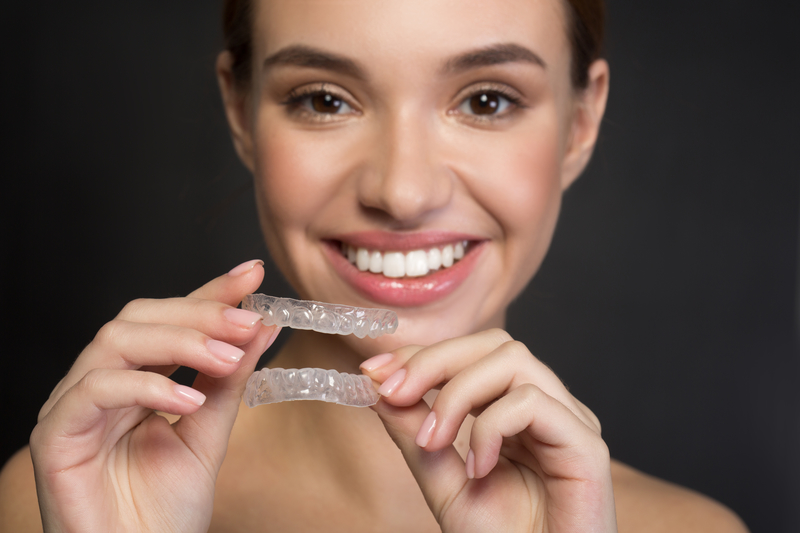
Your oral health can determine much of your overall health. Food and substances enter through your mouth, affecting your waistline, your appearance and your health. Your oral health can improve your overall health when you make changes in oral hygiene and bite and alignment. Misalignments in bites and crooked teeth can cause health and social problems, as they can lead to speech impediments, oral health diseases, and worsening chronic conditions. With braces, you can not only change how healthy your mouth is, but can change your life too!
Growing In Straight Teeth
Many people picture teens when they think of braces. However, 1/4th of people with braces are kids. Child orthodontics help straighten out teeth that would cause them speech problems, broken teeth and trouble growing in the permanent teeth. Adults and teens usually get them for crooked teeth.
However, braces aren’t just for people with crooked teeth. You may see patients young and old that appear to have a straight smile and yet they have to get braces. In this case, there is probably an oral health issue with the bite or alignment. Your teeth should line up along both the upper jaw and the lower jaw. When you go to the dentist, they will ask you to bite together so that they can view how your bite rests. How your teeth sit when they are resting together can determine if you will have dental issues and even speech impediments. This is especially true for young kids who are losing baby teeth and having adult teeth grow in.
Children have their baby teeth for years—even up to age 12 or later at times. Those baby teeth start to space out a bit more as a child grows from an infant to a school-aged child. Their mouth grows with them, making room for adult teeth. 20 baby teeth will become 32 adult teeth (including the wisdom teeth). However, those teeth don’t always come into the mouth in the right position or the right direction. With a healthy bite, the upper and lower jaws should have the teeth lining up evenly with one another. The teeth should be straight up and down, and the front upper teeth will rest just slightly in front of the bottom front teeth.
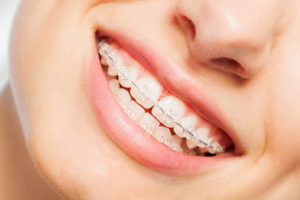
Braces Can Prevent Dental Injuries
When teeth aren’t straight and they jut out at different angles, it can mean broken, cracked or chipped teeth in the future. Those dental injuries would be caused by uneven pressure on certain teeth which will eventually break them or will cause areas of decay that you can’t clean well. The alignment of the teeth can also cause speech impediments when forming words, and those impediments can last for life if bite, alignment and crooked teeth aren’t corrected. For young children and adults alike, receiving braces for these issues can certainly change not only their oral health, but their life.
Braces are sometimes needed to make space in a patient’s mouth. Not all mouths grow to fit the incoming teeth, but that doesn’t mean the adult teeth won’t stop coming in. All your teeth will come in, even if they have to crowd out other teeth. That crowding can be painful and even one tooth coming in where there isn’t room can cause all of your teeth to go crooked. As a tooth comes in, it will slowly push other teeth from the area, which then have to shift. This is what wisdom teeth commonly do, and it can be painful as it messes up a smile. Braces can stop that from happening by making plenty of space in the mouth for teeth that are still coming in.
What If You Have Your Teeth Already?
The dental issues we have mentioned will generally happen before a person has reached adulthood. The American Association of Orthodontics recommends that children have their first orthodontic appointment around age 7 or 8. This is when we can see how the baby teeth are falling out and how the permanent teeth are coming in. We stop dental issues before they start forming, and during this time when the jaw bones are still soft enough to mold. However, at least 1/4th of patients that have braces get them when they are adults. The jaws have grow completely and have hardened into place by adulthood, making orthodontic treatment harder.
However, we said “harder”, not “impossible”. Orthodontic advancements can definitely help an adult change their smile to change their life. Now, more than ever, it is becoming increasingly important to have a straight smile as an adult. Studies show that others make an opinion of you based off of the first few seconds of meeting you. Your appearance can go a long way. Your smile is also one of the top 3 features others will notice first when formulating an opinion about you. Studies show that those with straighter teeth are seen as more attractive, successful, smart, healthy and trustworthy. Employers are more likely to hire those with straight smiles over those who don’t have them.

Your Options
If you’re an adult, you can straighten your smile without it being noticeable. Children often go the route of traditional metal braces or ceramic braces, which are the same but made from ceramic material. Adults and many teens opt for hidden options like lingual braces or Invisalign treatment. Lingual braces are metal braces that attach behind the teeth, staying hidden as they correct bite, alignment and your teeth. Invisalign treatment consists of transparent aligners patients change out every week. However, they don’t do as well with larger bite and alignment issues. It’s never too late to receive orthodontic treatment.
Whether you are young or old, you can change your smile to reduce or eliminate your problems with speech, tooth decay, oral health issues, dental injuries and to even feel more attractive. Want to see just how much braces can change your life? Call Belmar Orthodontics today at (303) 225-9016 to receive your free consultation!
Avoid These Sweet Treats at Halloween with Braces
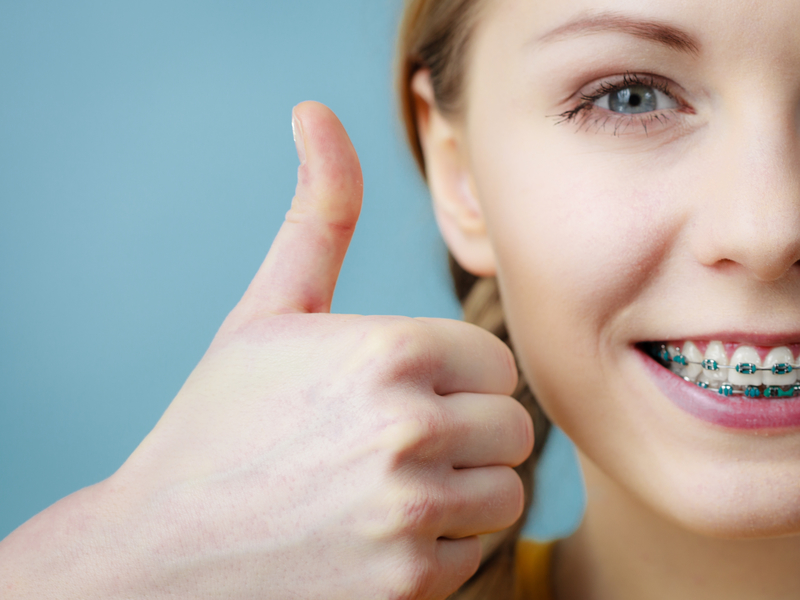
Halloween can be an incredibly fun time for kids and adults alike. However, the not-so-fun part is developing cavities later on because of that Halloween candy. Sugar is directly related to tooth decay, but it’s even worse if you have braces on your teeth. There are specific candies you should try to avoid if you have brackets and wires, as they can get stuck easier. Find out what these are and tips to reduce your risk for tooth decay during the holidays!
How Popular Is Halloween?
About $2.4 billion dollars is spent in Easter candy each year. However, Halloween candy is a close second at around $2.1 billion in sales. Divided up into individual households, that’s about $44-$47 dollars spent on Halloween candy in each household.
If you think Halloween candy sales are scary, here are the facts on the actual candy consumed on Halloween day itself:
- Almost all children and at least ½ of all adults eat candy on Halloween day.
- However, the amount of candy consumed is well-past the recommended 6 or less teaspoons children should have in a day. Adults should only have between 6 and 9 teaspoons of sugar (tops) per day. On Halloween itself, up to 3 cups of candy is consumed per child.
- That equates to about 48 teaspoons of sugar per cup, or about 144 teaspoons of sugar, or 675 grams of sugar in one day.
- USA Today reports that 4% of all the candy eaten in the U.S. is eaten on Halloween day.
- Reader’s Digest reports that the amount of calories children and adults alike eat on Halloween equals anywhere between 3,000 and 7,000 calories.
- Not only can this much sugar lead to incredible health problems and diabetes, but sugar—the main ingredient in that candy—is the direct cause of tooth decay.

How Can Candy Hurt Your Teeth?
Candy is damaging to your teeth because of the sugar, which is a direct factor in your risk for tooth decay. The more sugar you eat, the more cavities you could get. When you eat or drink, sugars in food will mix with certain bacterias in your mouth. That mixture will create a sticky substance called plaque. You can’t simply swallow that plaque either. It sticks to your teeth and becomes an acidic substance when it mixes.
Because it’s acidic, as it sticks to your tooth enamel like a film, it will work to erode and decay your teeth. It does this by breaking up the minerals that make up your tooth enamel layer. If you don’t brush and floss your teeth often enough, or you eat a ton of sugar, you have plaque working hard on your teeth to destroy them.
Plaque can decay your tooth surface to create surface cavities. If enough decay happens on that layer, it can get through to the inner layers of the teeth, causing internal (and sometimes large) cavities that can turn into infections and tooth loss. Sugar is the main food for plaque, which is why candy—whose main ingredient is sugar—can hurt your teeth.
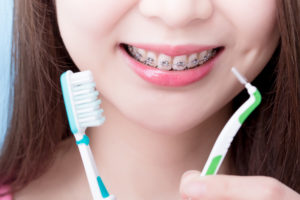
Avoiding Specific Sweet Treats with Braces
Anyone can get cavities and other oral health problems from a large candy or sugar consumption. You don’t only have to worry about candy either when it comes to cavities—you have to worry about all foods. Most foods you can buy at the store have added sugars in them. That includes juices, sports drinks, and sodas, as well as the obvious sugar foods like candy, cakes, ice cream and cookies. Always check food labels to see how much sugar a food contains.
There are specific foods you want to avoid if you wear braces, as those foods and candies can make it much easier for you to get cavities. Especially at Halloween, popular candies are ones that are chewy and sticky. Anything chewy and sticky will get stuck in your brackets and wires if you wear lingual, ceramic or metal braces. Sweet treats you want to avoid if you wear braces include:
- Gum: Gum is made to be elastic and sticky and can stick to brackets like crazy. Avoid it completely with braces. After your braces are off, chew sugar-free gum.
- Chewy/Sticky Candy: Examples include caramels, taffy, Tootsie Rolls, Starburst, licorice, Skittles, Sugar Daddies and any candies that are similar. Avoid fruit snacks, gummies and dried fruit as well, which are all incredibly sticky.
- Hard Candies: These go hand-in-hand with suckers and mints. All of these candies expose your teeth to sugars for prolonged periods of time, which means a prolonged risk for acidic plaque and tooth decay.
- Sodas/Citrus Drinks: These and any carbonated drinks all contain either citric acid or carbonic acid, which erode the teeth. That can mean you have tooth erosion and decay all around your brackets, which will be very noticeable when your braces come off.
Enjoy Some Sweetness This Halloween
When it comes to Halloween, we want all of our patients to have fun and to enjoy the holiday. Candy is naturally a part of that holiday, but it doesn’t mean that you have to experience tooth decay in the weeks following it. Every person needs to be conscious of their candy consumption on Halloween to avoid tooth decay, erosion and health problems in general.
You don’t want to work hard for 18-24 months getting a straight smile if it’s decayed when your braces finally come off. Enjoy your Halloween sweet treats, but be mindful of your oral health. Brush your teeth 3 times a day or after every meal with fluoride toothpaste. Floss your teeth at least 1-2 times a day. Avoid sticky and sugary treats and clean the teeth very well if you do eat them at Halloween. Avoid acidic drinks and watch your sugar consumption. For tips on cleaning your teeth correctly with braces to avoid tooth decay, call Belmar Orthodontics today at (303) 225-9016!
Be Vigilant with Your Child’s Oral Health
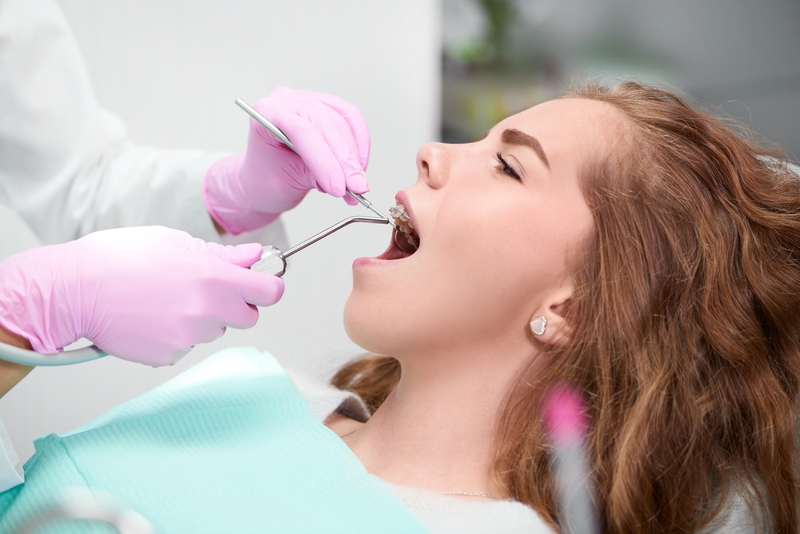
More than half the people that wear braces are children and teens. This can be an exciting time for kids to fix bite problems and crooked teeth. However, tooth decay and oral health problems also run rampant during braces if oral hygiene guidelines aren’t followed. Sometimes children and teens need a nudge to help them with their oral health. Find out what they should be doing to care for their braces during this time!
Facts About Braces
Did you know that there are over 4 million people in the United States each year that wear braces? About 1/4th of those are adults and the rest are children and teens. Patients use braces as teens to straighten the adult, permanent teeth that have come in. When children have child orthodontics, those brackets and wires are meant to correct bite and alignment issues that could cause a child severe problems in the future. Children can then straighten their permanent teeth later on.
There are common oral health problems that many children face today. It’s called tooth decay, and the National Institutes of Health reports that it’s the most “prevalent, chronic disease” among children and adults. 42% of children will have tooth decay before they are 12. 23% of those will have untreated dental decay. About 92% of adults have had tooth decay sometime in their life. The worst part about this is that tooth decay is completely preventable if a child, teen or adult has good oral health through practicing proper oral hygiene.
It may take several years for a child to have the right dexterity in their hands to brush and floss correctly. That is why parents must take care of their child’s oral health when they are young, or it could lead to serious problems. Children rely on parents to help their mouth stay healthy. Even teens need to be told to brush and floss, as it’s something they often forget. These habits are especially important during braces, as oral health is most affected when there are brackets and wires on the teeth.
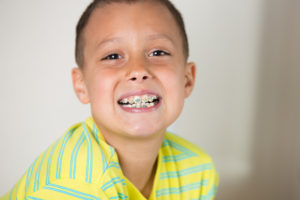
Helping Your Child’s Oral Health
The American Academy of Pediatrics recommends that children see a dentist around 1 year or within 6 months of their first tooth coming in. After that, they should go biannually to the dentist. This is how a dentist can start to see signs of bite and alignment problems, which are then referred to an orthodontist.
With some orthodontic appointments, a child can be fitted for braces to correct problems that are easy to fix with a young, moldable jaw, but hard to fix when a person is older and their jaws are set. Without braces, you will have to help your child brush and floss their teeth at least twice a day as the American Dental Association recommends. Use child toothpaste enhanced with decay-fighting fluoride and a toothbrush that fits the size of your child’s mouth.
Children will need to floss between their teeth, but might have to start out with flossers for kids. With braces, children should be brushing at least twice a day, but after every meal is even better. They should brush at 45-degree angles, making sure to move in all different directions to dislodge food that has been stuck in the braces. Flossing is incredibly important as well, as it gets 40% of tooth surfaces that are missed if flossing is skipped. Help them learn how to use threadable floss. This gets poked through the spaces between their teeth, pulled through, and flossed like you would normally do. Use a Christmas tree brush or a waterpik to help them dislodge stuck food.
Do You Have Good Habits?
One of the best ways to help your child with their oral health is to show them its importance through your own actions. If you don’t brush and floss your teeth, your child or teen may not either. When you’re also not visiting the dentist, odds are that your child isn’t either. If you eat a poor diet full of sugar, then your child will do the same. Children often copy what their parents do.
Make sure you are brushing your teeth at least twice a day, especially when your children can see you. Floss your teeth and teach them how to floss properly as well. When you need to go to the dentist, take your children with you and have them get their comprehensive exams and cleanings. All these oral health measures will ensure their mouths stay clean and healthy for years!
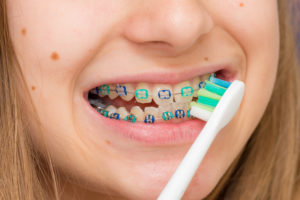
Other Factors to Consider
Your child can brush and floss their teeth often and may still end up with cavities. Cavities come from plaque in the mouth that has set on the teeth for too long. Your mouth makes plaque when you eat sugary foods and that sugar mixes with mouth bacteria to make acidic plaque. That acid is what causes the tooth decay. However, if you limit your sugar intake to begin with, you won’t have the problem with tooth decay.
Unfortunately, sugar is one of the most-consumed substances in the world. It is literally found in almost every food. That is why tooth decay is so common, especially in children. Limit your child’s sugar intake if you want them to have healthy teeth when their braces come off. Teeth that don’t get brushed or flossed often with braces, may end up having cavities, gum disease and eroded areas of their teeth when braces come off.
Their food can also leave them with squares on their teeth from the brackets, because the surrounding tooth has been damaged by food. Make sure to consider what your child is putting in their mouth if you want to help them have good oral health! For more tips or answers to questions about your child’s braces, call Belmar Orthodontics today at (303) 225-9016!
Cavity Treatment During Braces
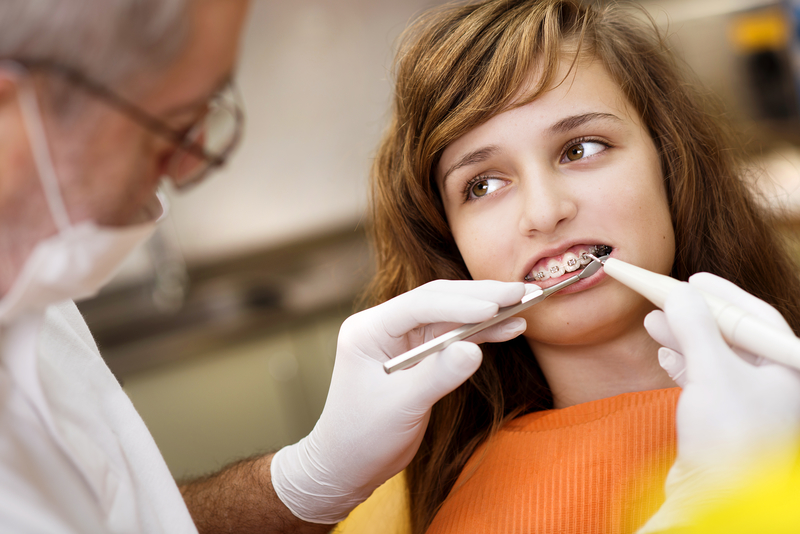
Did you know that an orthodontist and a dentist are not the same? Only a dentist can help with cavities, gum disease and more, while only an orthodontist can straighten your teeth in a certain way. A patient’s time with braces is a time when cavities happen very quickly, because the teeth are harder to clean. To prevent cavities during your time with braces, it is vital that you continue to see a dentist. If you do happen to get a cavity, find out what that cavity treatment will look like!
Proper Oral Hygiene
The American Dental Association recommends that every patient brush their teeth at least twice a day to avoid tooth decay. Brushing after every meal is even better for avoiding plaque buildup that leads to decay. Every patient should also floss their teeth at least once a day. Using fluoride toothpaste is best, because fluoride helps coat the teeth in a protective layer that prevents decay and keeps tooth enamel stronger. Patients can also benefit from mouthwash, as it can kill bacteria that would otherwise create plaque.
However, these recommendations are for people that don’t have braces. Every single person—children, teens and adults—should follow these recommendations. Infants should not use fluoride or mouthwash, but their child toothpastes generally have safe amounts of fluoride in them. If you are a patient that is receiving orthodontic care via braces, you have to go the extra mile with your oral hygiene. That means more frequent brushing, more flossing and watching what you eat.
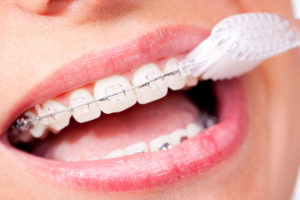
Taking Care of Braces
Braces can be tricky to clean. However, their design provides the best and quickest way for you to straighten your teeth, which is why traditional metal braces have been around for so many decades. Metal braces, ceramic braces and lingual braces all have a brackets-and-wires design.
However, with braces, you must be meticulous with cleaning them or you will have food and plaque get stuck places. If you don’t unstick those substances, they will quickly erode your tooth enamel and cause decay around your appliances. This can happen on every tooth as well.
Follow these tips for cleaning your braces:
- Brush after every single meal. This reduces staining and bacteria buildup. Use a regular soft-bristled brush and brush down from the top, then up from the bottom. Brush in all different directions to dislodge food.
- Use a threadable floss or a floss threader. Both will require that you thread the floss through each space between your teeth. You will have to go under the wire to do this, and it will take slightly longer than normal flossing. This is one of the most important oral hygiene recommendations to follow!
- Use helpful tools. A proxabrush is a small braces brush that can help unstick foods. It looks like a tiny Christmas Tree brush. A waterpik is also helpful. This is a tool that helps blast away food particles with a stream of water.
Tooth Decay with Braces
Many children and teens skip flossing or brushing here and there. Every time you skip on an oral hygiene habit, it increases your risk for tooth decay—or cavities—with braces. Your time with braces is one where you have to be super careful about your oral health. Most people picture their beautiful smile after getting their braces off, but they don’t think about cavities and tooth erosion. You can end up with tooth decay and parts of your teeth that have eroded due to your oral hygiene habits with braces.
Nobody wants to spend 18-24 months perfecting their teeth only to be disappointed in their smile. That’s why oral hygiene is so important. Tooth decay happens rapidly, and it can happen where the brackets are bonded to your teeth and in-between your teeth because it is harder to floss. Normally, you would simply visit the dentist and have your cavity removed and filled. However, cavity treatment is a bit different with braces.
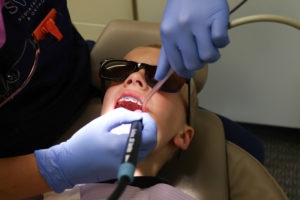
Cavity Treatment with Braces
Cavity treatment is slightly harder if you have braces, but not impossible. Generally, decay happens between teeth cracks and around brackets and wires. If you have tooth decay that is in a tricky spot, we can remove your wire so that a dentist can provide you with a proper cavity treatment. You will have to have your appointments scheduled close together (dentist and orthodontist) so that you can get your cavity filled and your wire replaced.
In severe cases of tooth decay, we may have to remove a bracket from the tooth if it interferes with the dental work that needs to be done. We only do this in certain cases, and we replace the missing part as soon as possible so your teeth don’t move. Cavity treatment—with taking out the tooth decay and filling it—is the same with braces as it is without, only you have to work around orthodontic appliances if you have braces. Always let us know if you have tooth sensitivity, sharp (and even mild) pain when chewing and if you have sensitivity to hot or cold foods. This signals that there may be a more severe cavity.
Prevent Cavity Treatment
The goal of every patient—old and young—is to avoid tooth decay altogether. If you do, you’ll never have to worry about cavity treatment with braces. If your decay is small and in a tricky spot, you may have to wait until your braces are off to receive your cavity treatment. That might make your cavity grow larger, which is something you don’t want. Always see the dentist to check your mouth for tooth decay before you receive orthodontic treatment. This can avoid many problems in the future.
If you are prone to getting cavities or you have weak enamel, consider receiving Invisalign treatment instead of getting brackets and wires. This will help you avoid problems with cavities and needing to get cavity treatment. If you have tooth pain or want to learn more about cavity treatment with braces, call Belmar Orthodontics today at (303) 225-9016!

